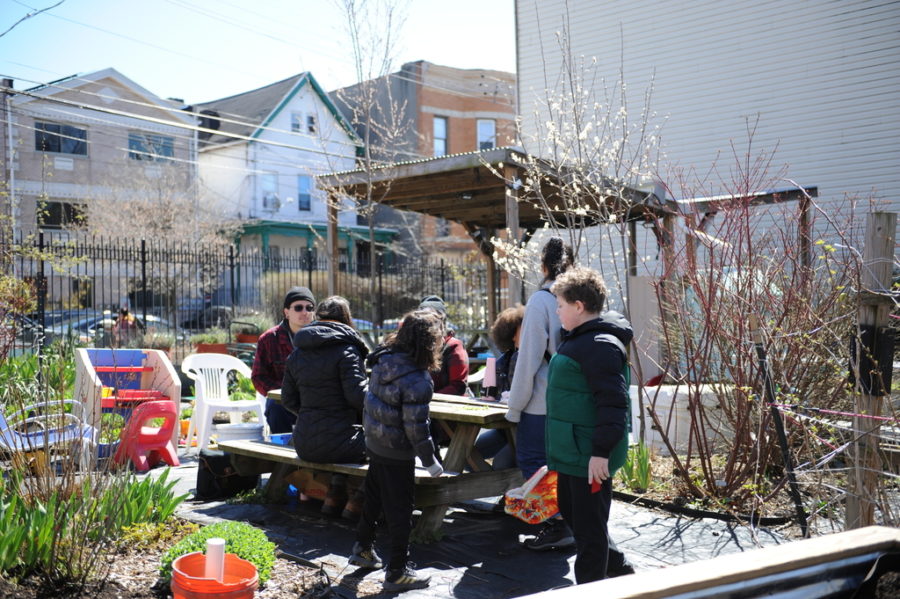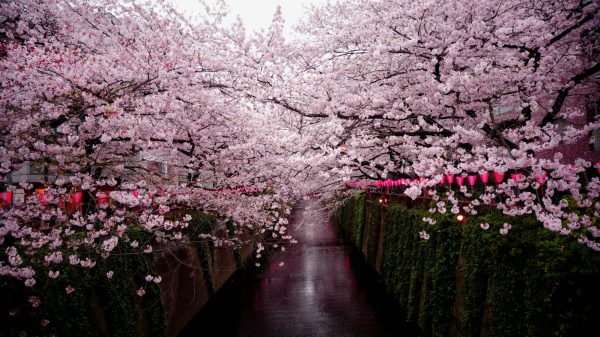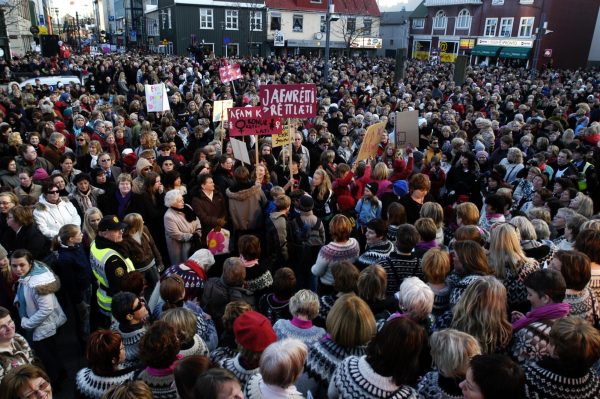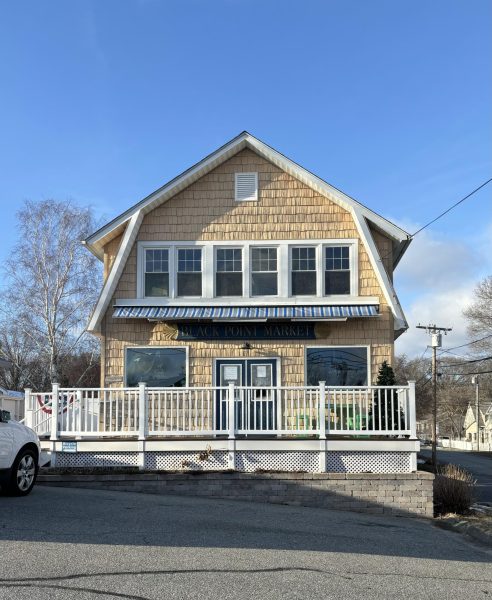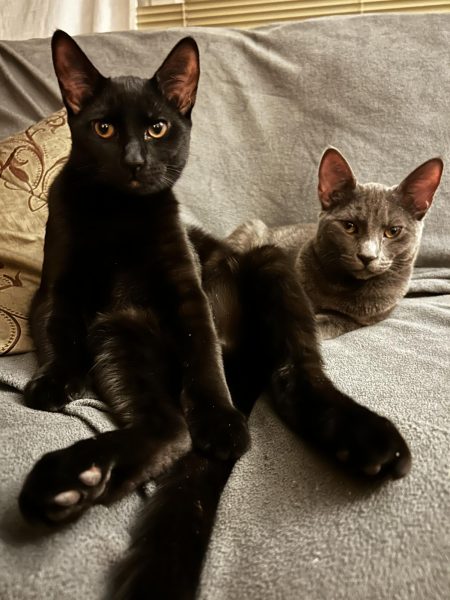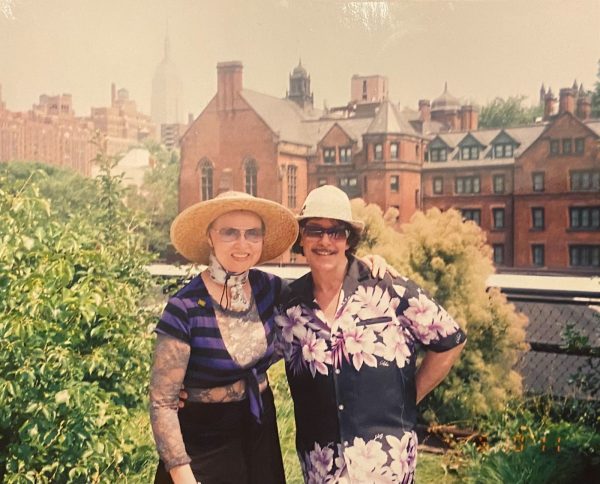Seeding Sovereignty in the South Bronx
From the 1970s to now, community gardens have served as spaces where New Yorkers feed their neighbors, fight urban neglect and environmental racism, and cultivate community-led change.
Here are members of the Morning Glory Garden at a Sunday member meeting in early April.
It’s a clear and crisp April morning as I step out of the train station — the South Bronx is quiet today, aside from the periodic rattle of the 2 Train from up above. As I turn the corner onto Hoe Avenue, I arrive at the Morning Glory Community Garden, just as the members are finishing up their meeting. Visitors are greeted by a friendly hand painted sign reading, “The garden is open!/¡El jardín está abierto!” To the left of the sign is a large pile of soil that will soon be distributed among the many planting beds. The members are gearing up for the spring and summer —April is their busiest time of year. Soon, the garden will be filled with flowers and sprouting vegetables to be harvested in July and August.
Setting my camera bag down gently, careful not to disturb their meeting — or the many plants nearby — I try to find a seat out of the way. Cayla Casciani, one of the garden’s co-coordinators, waves, motioning for me to come over. “We’re almost done here,” she says.
In the 1970s, a new environmental justice movement was blossoming on Manhattan’s Lower East Side. Artist and activist Liz Christy, along with fellow radical gardeners, took over a vacant lot on the corner of Bowery and Houston Street that had served as an unofficial neighborhood dumping ground, filled with trash and debris. Along with sixty individually maintained vegetable beds for garden members, they planted a wide range of wildflowers, fruit trees, weeping birch trees, and even a towering dawn redwood.
In a 2013 article for the Local East Village newspaper, founding member Donald Loggins recalled, “Once we had it planted and things were finally looking nice, the authorities wanted to shut us down. They marched in here, like ‘It’s city property. Beat it.’” After months of advocacy and petitioning the city, they were granted official approval: the City’s office of Housing Preservation and Development agreed to rent them the site for $1 a month in 1974.
Christy and her fellow activists (the Green Guerillas, as they still call themselves today) were not alone. Across the country and the world, environmental activists have continued reclaiming vacant lots and neglected public spaces, filling them with flowers or even growing food. This practice is known as guerilla gardening — some even describe it as “horticultural graffiti.”
More than simply neighborhood beautification, guerilla gardening, and urban gardening in all its forms, are acts of resistance to the systematic neglect (or absence) of public spaces, and a rejection of the way cities prioritize development and profitability over marginalized communities. Community gardens are a site for people to gather, grow, and feed their community together.
During the New York City financial collapse of the 1970s, the city cut back on social services, which hit already-neglected neighborhoods like the South Bronx especially hard. Urban decay and poverty were rampant, entire blocks of buildings were destroyed, and over 300,000 residents left the borough. Though poverty rates have declined in the twenty-first century, the Bronx continues to have the highest poverty and unemployment rates in New York state.
Urban gardening, led by New Yorkers in Black and Latino communities — the communities often hit hardest by urban neglect— has played a crucial role in community-led change. In 1978, after substantial lobbying from environmental activists and gardeners for formal recognition of their work, the city established “Operation GreenThumb.” The agency, which is a part of the New York Department of Parks and Recreation, provides licenses to gardeners along with programming and material support. Today, Operation GreenThumb is the largest urban gardening agency in America.
Though New York City has been the site of many vibrant urban gardening projects, the history of community gardens in New York City is also one of strife and uncertainty.
The status of community gardens under the Giuliani administration was particularly threatened. As former mayor Rudy Giuliani (who once dismissed the Liz Christy Community Garden as “communistic”) pushed to “clean up” the city through tough-on-crime policies and the privatization of public services and land, his efforts to expand housing development led to the destruction of 67 community gardens across the city. “It’s about profitability,” founding Morning Glory Garden member and co-coordinator Aazam Otero explained. “So many gardens were destroyed for development. Giuliani saw these gardens as not having any value whatsoever.”
The Giuliani administration put 114 community gardens up for auction in the winter of 1998-1999. Activists and community members fought to save them through protests, legal battles, and acts of nonviolent civil disobedience. After months of activism, their work paid off — in 1999, these 114 gardens were bought by two private non-profits: The Trust for Public Land and the New York Restoration Project, which prevented the gardens from being destroyed.
Even today, the status of many urban gardens remains precarious.
Morning Glory Garden began as a guerrilla garden in 2009. Their website reads: “We refused to be denied access to land in our own community and we sought to make our own garden.
We chose a large, vacant and poorly maintained lot in our community. We took it over, cleaned it up and established a garden on that land over a two and a half year period.”
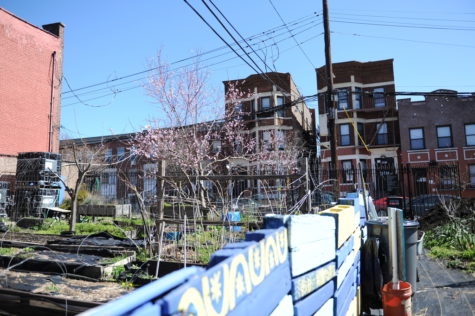
Morning Glory was displaced from its original location by the city in 2011. Their fight for a new location was a long one, but in late 2014 they were awarded their current location through GreenThumb and the Gardens for Healthy Communities program, a part of then-mayor Michael Bloomberg’s Obesity Task Force initiative, and have been there ever since.
Despite obtaining their location through legal channels, the status of Morning Glory Garden — and all community gardens that obtain licenses through GreenThumb — is uncertain. “It may seem like we have protection, but we don’t,” Cayla said. “If you are a GreenThumb garden you sign an agreement but at any time they can take the garden from you. The garden isn’t completely secure in the hands of the community.” A clause in their license states that it is “terminable at will by the commissioner in his or her discretion at any time, upon sixty (60) days written notice, and Licensee shall have no recourse of any nature whatsoever by reason of such termination.”
In spite of the uncertainty, Morning Glory has continued to play a key role in their South Bronx community for almost a decade. It’s a space where adults and children learn, gather, celebrate, play, and grow food to feed themselves and their community. Every member has their own reasons for coming to the garden.
“I had a goal to produce as much of my own food as possible,” said Anike Cherry, who has been with the garden since 2021, and has planted a variety of vegetables, including beets, cauliflower, carrots, garlic, and onions.
Michelle Carr, who leads painting activities in the garden, has been a member of Morning Glory since 2015. For her, farming and gardening were familiar – she had grown food with her grandmother in her family’s home country of St. Croix. When she saw the garden in her neighborhood, she knew she wanted to join. “Having access to the earth felt like a natural fix,” she said. Growing their own food made a big difference for her family, too, particularly for her son, who deals with food allergies.
Another member, Jumi Sanchez, expressed a similar sentiment. She is concerned about the level of pesticides and chemicals in standard grocery store produce. One day, she hopes to own her own farm.
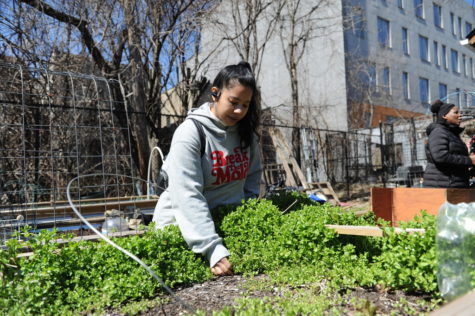
Urban gardening, particularly in sites of previously demolished buildings, creates unique challenges. The New York City Parks Department requires many community gardens, including Morning Glory, to use raised beds for planting due to the risk of soil contaminants, including heavy metals like lead. Rodents also pose a problem, though Morning Glory enlists expert help to resolve the issue: “we’re very hospitable to cats,” Michelle said.
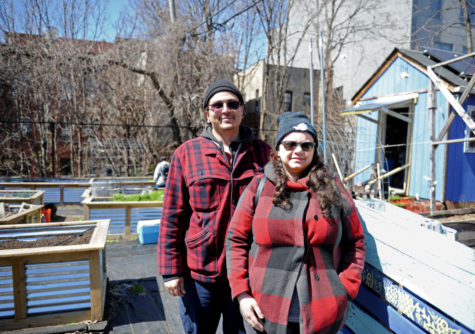
Morning Glory Garden hosts a variety of activities for the community, including clothing swaps, story hours, art, and workshops on topics like planting, natural dyeing, and herbal remedies.
I made my way over to the back of the garden, taking care not to step on shrubs and offshoots that had spilled into the rows between planting beds. There, Aazam was turning the compost with a pitchfork. Though he works in aviation full-time, he considers the garden his “true work.” He has been working in community gardens for over fifteen years.
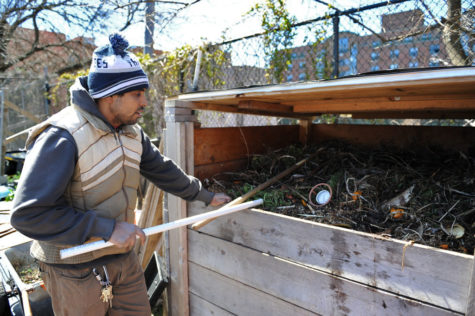
Growing up in the Bronx, Aazam experienced firsthand what it meant to live in an area consistently subject to injustice and neglect. His frustration with the failures of politicians to create change both in his community and on the national level led him to begin getting involved with community gardens as a young adult. “I remember being really frustrated. I was protesting the Iraq War, and feeling like it was just gonna go ahead and happen anyway,” he said, continuing to poke at the compost. He says his work with Morning Glory is part of his commitment to protecting and transforming his community. “Growing is hope. You have to have a certain amount of hope for the future, hope that your work will pay off.”
A couple days after visiting the Morning Glory Garden, I spoke to another member, Danielle King-Powell, who is an elementary school teacher in the Bronx. “This is my fourth spring with Morning Glory,” she said. After passing by the garden while on the phone with a friend, she made a spur of the moment decision to join. “Since then,” she says, “I’ve loved learning and growing with the garden.”
For Danielle, gardening is less about the food and more about finding escape.
Like other members of the garden, her time spent has helped her let go of perfectionism. Though Danielle has learned a lot about how to take care of plants, she doesn’t stress if things don’t work out. “If it dies, it dies, but nothing is ever wasted. It just becomes compost,” she explained. “It’s made me be more free.”
At Morning Glory, all members are free to suggest plans for events and programs. Danielle has noticed a lack of resources and spaces for mothers and their young children, and intends to create programs that allow the garden to fill this gap. “It’s a really nice experience to go to the garden with your baby. But many moms don’t have ideas or resources of things to do with their babies. I want to provide that.”
Danielle describes bringing her son to the garden as a “full circle moment.” Her early days in the garden were spent recovering from uterine fibroid removal. “Going to the garden was just so healing,” she said. “I remember going and just separating the bulbs of the irises. And after the surgery, we started trying for a baby. Finally getting pregnant and now bringing my baby to the garden is such a beautiful thing.”
In many historically marginalized neighborhoods, especially where residents are primarily poor, Black, and/or Latino, finding affordable, healthy food can be difficult. The South Bronx – one of America’s largest food deserts – is no exception.
“When I lived off East Tremont, the neighborhood supermarket didn’t even have baby spinach,” Danielle said. “My family has a car, but in this neighborhood, healthy food is really expensive, and it can be hard to access. The garden is a really valuable resource.”
In order to combat the lack of access to affordable, healthy produce, Morning Glory Garden created a harvest box program in 2016. Bronx residents can sign up to receive bags of organic produce every other week from mid-April through November.
Community gardens are more than green space. They provide opportunities for people to take an active role in improving their communities, and are a means to foster initiatives for community sovereignty and food justice activism.“It’s important that the community has more ownership over spaces, has more of a say in what happens,” Aazam said.
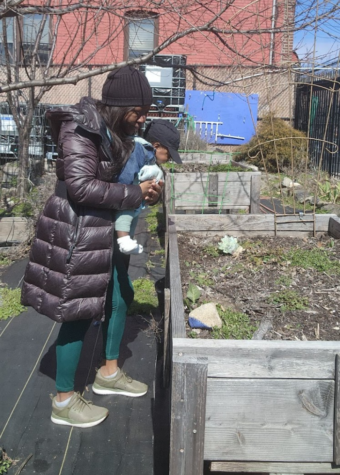
When asked why people should consider joining a community garden, Danielle’s reasons were numerous. “It’s a great resource to keep your mind sharp. And these days we’re so disconnected from nature — we have to make it an intentional thing. We don’t really have that connection any more, and the garden is a great place to have that and to slow down. Also, the satisfaction that you get from growing something, being able to say, ‘I grew this tomato!’ — that feels really good,” she said. “It’s a place to meet like-minded people, too. We don’t commune like they did back in the day.”
Founding member Aazam began getting involved with community gardens as a young adult. “I remember being really frustrated. I was protesting the Iraq War, and feeling like it was just gonna go ahead and happen anyway,” he said, continuing to poke at the compost. “Growing is hope. You have to have a certain amount of hope for the future, hope that your work will pay off.”
Nora Sissenich is an Editor-In-Chief for 'The Science Survey,' a role that she values deeply because it allows her to offer guidance and insight through...

